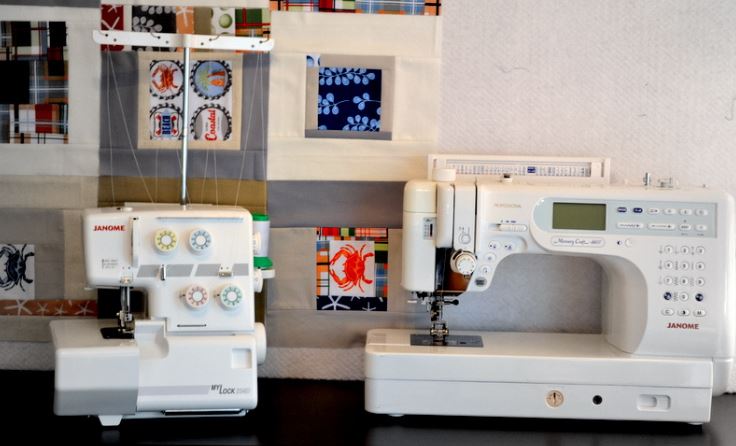Do you have a serger? Are you thinking of buying one? This type of sewing machine is very helpful and used by many.
By definition, a serger is a specialty machine in sewing that is used to overcast, or sew over and enclose the raw edges of fabric. This prevents fraying and finishes the edges. The serger also trims off the excess seam allowances, doing all of this in a single step. Those who sew garments are especially fond of this machine.

Photo via Heather Bostic
There is no denying that the serger is a very handy tool, and there are many benefits to sewing with a serger. They make knits easy to work with. They are fast and efficient. They add stretch to the seams, making them more durable. Since the raw edges are enclosed, the finished edges create a professional look with no fraying. Sergers can be used in other ways, like adding elastics, rolling hems and creating decorative stitching.
As wonderful as they can be, sergers also have some negatives. This is not a stand-alone machine that can do it all. Some garments can be sewn completely with a serger, but many of them also require a regular sewing machine for zippers, buttonholes and topstitching.
Another negative? Sergers can be intimidating! There are multiple threads, which makes the threading process tricky and scares many sewists off.
Photo via Heather Bostic
If you’re in the market for a serger, here are points to keep in mind.
1. Figure out how you will use a serger.
How often do you plan to use it? Are you hoping to finish the edges on the very few pieces of clothing that you have sewn? If so, a basic inexpensive machine is likely all you need. Are you a prolific garment sewer who is ready to step up your game? It may be time to invest in a more expensive serger.
2. Decide how much money you are willing to spend.
Basic machines start around $200 and have two to four threads. A more expensive serger has as many as five threads and some have differential feeds, allowing for extra adjustment. High-end machines can cost as much as several thousand dollars.
3. Shop around.
Check online, and read as many reviews as you can. Amazon is perfect for this, as is Consumer Research. Be sure to visit all of the retailers in your area. Many sewists like to shop local! This provides the opportunity to test drive the sergers and ask questions. When machines are purchased locally, both sergers and regular sewing machines, it is easy to have them receive regular maintenance and repairs. Often those shops provide classes and lessons, too. Sometimes they are free!
4. Consider buying used.
Many retailers have previously-owned sergers available for purchase in their shops. Oftentimes these gently used machines have been traded in by a sewist who has decided to purchase an upgraded model. Shops perform a thorough maintenance routine on the sergers, make any necessary repairs, and then sell them at a discounted price in their stores. This makes it possible for customers to purchase a new-to-them serger at a reasonable price.
[box type=”shadow”]Now that you know how to choose a serger, you’ll want to learn how to use it like a pro. If you’re just starting out, check out Beginner Serging: Machine Basics & Techniques, taught by Amy Alan. Or, if you’re ready to take your serging to the next step, sign up for Creative Serging: Beyond the Basics with Angela Wolf.[/box]

This article is really outstanding. It is an informative article that is useful to me. So, thanks for post this article.